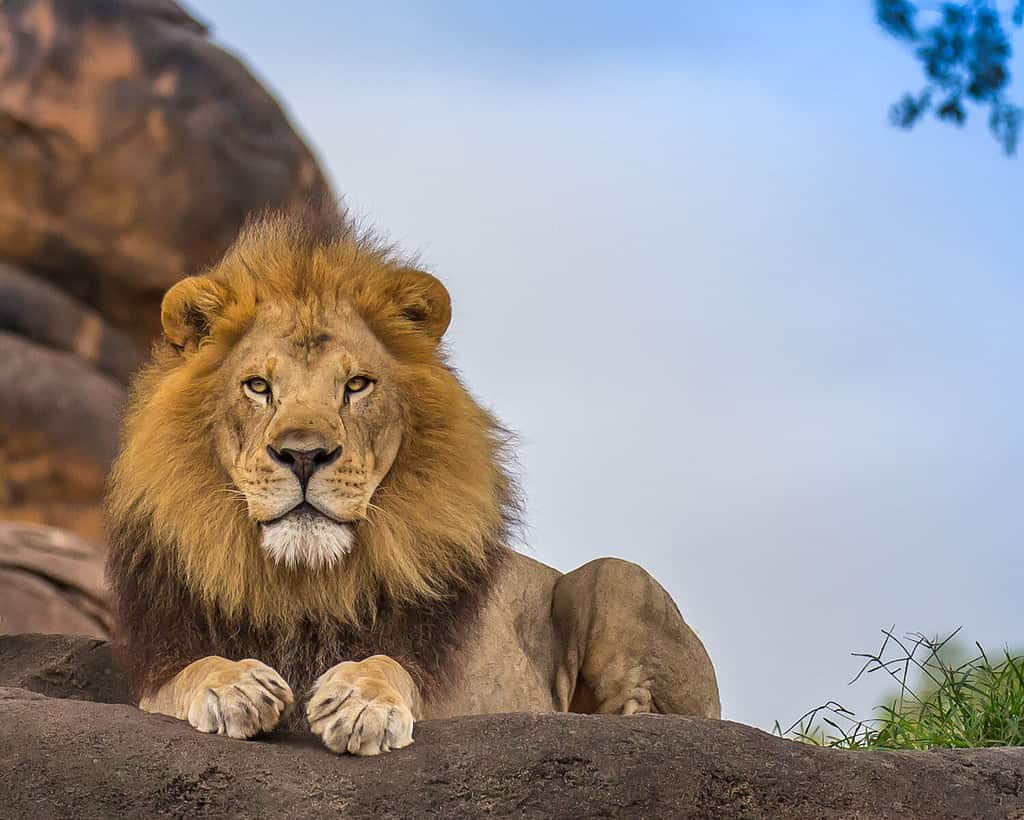Continue reading for our analysis...

When you embark on a safari adventure, part of the thrill is seeing wild animals up close. But sometimes they get too close. The lion in this video literally clings onto the safari vehicle like a child with separation anxiety on the first day of school.
When the video starts, a white SUV out on safari has picked up an unwanted and daring hitchhiker. A lion is holding on to the spare tire on the back of the vehicle with its two front paws and is using its two hind legs to walk behind the car. The car is moving slowly toward the gates — presumably the exit from the park.
The lion, seemingly unbothered, continues with the vehicle, appearing kind of like a tired person at the gym, holding on to the treadmill while they get those last few steps in. It’s an unusual sight from the angle you see it but even more for those inside the SUV!
How Powerful Are Lions?

Known as kings of the jungle, lions’ power is obvious from their roar to the swipe of a single, flesh-tearing paw.
©SteffenTravel/Shutterstock.com
A lion’s roar alone can send chills down your spine. In the wild, their presence is enough to send others running, scurrying, and flying away. When a lion uses its paws and claws to swipe against flesh, it’s using up to 1,400 pounds of force. Those paws are deadly. Not just that, however.
A lion uses its whole body when attacking and is capable of taking down large prey animals like wildebeests and buffalo (with the help of their pride, of course). When attacking, they use everything they have. They claw, they use their body weight to drag opponents down, and their lethal bite force is 650 pounds per square inch (PSI). If a lion wants you dead, your chance of survival is slim to none.
How Do Safari-Goers Stay Safe While Close to Wild Animals?

Chobe National Park in Botswana is a popular place for safari-goers to view African wildlife.
©Martin Mecnarowski/Shutterstock.com
The most vital safeguard for safari-goers is their guides. Their guides know what to do and what not to do in these environments. So long as those enjoying a safari follow their instructions, they can ensure their safety.
Their job is to educate you on the animals you see and provide you with guidance to keep you safe. When a guide tells you to remain in the vehicle, it’s for good reason. Luckily, no one attempted a great escape in the video below when a lion gets a bit too close (and persistent) for comfort.
How Large Do Lions Get?

A large male lion can weigh up to 550 pounds.
©Jrossphoto/Shutterstock.com
An adult lion stands 3.5 to 4.5 feet at the shoulder. Males have an average body length of 8 to 10 feet, while females can reach a length of 9 feet. The lion’s tail extends beyond that at 2-3 feet long. The weight of a male lion ranges from 330 to 550 pounds, while the female is 260 to 400 pounds.
While lions are referred to as “king of beasts” and “king of the jungle,” there’s one cat species that tops them in size — the tiger. While tigers also grow up to 10 feet in length, they weigh up to 660 pounds, making them a heavier species than lions. Tigers are the largest cat species on the planet.
Thank you for reading! Have some feedback for us? Contact the AZ Animals editorial team.







